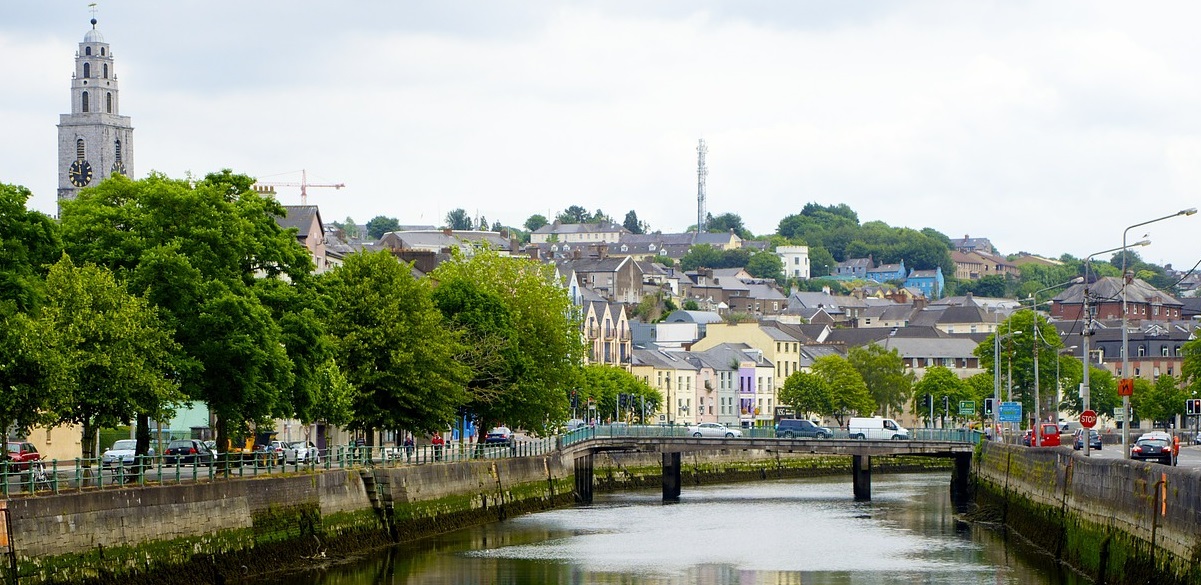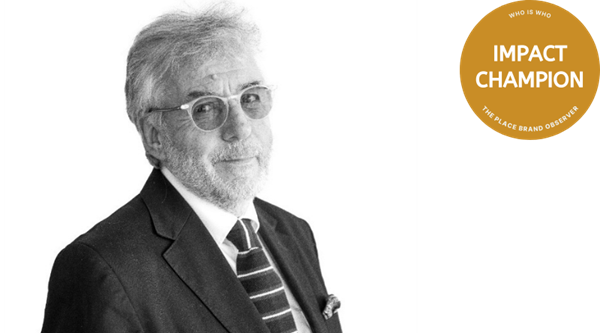For this interview we caught up with place brand strategist and placemaking advisor Malcolm Allan of UK consultancy PlaceMatters. Malcolm’s many years of experience in place planning and marketing have made him a sought-after conference speaker and consultant. His legendary case study on Cork City Region Branding is among the most detailed and elaborate which we have come across so far.
Learn about:
- What it takes for place branding initiatives to be successful;
- Where in the world is most interest in the practice of place branding;
- The main changes in the industry;
- Why it is so important to involve communities in place branding work, and how to do it;
- Whether place brand rankings are important for his work;
- Best practice examples and recommended books.
Malcolm, what got you interested in place branding?
What got me interested (some 25 years ago) was the realisation that many of my colleagues in the built environment professions did not recognise this: for a place to work through good design (traditional master planning), people responsible for planning and developing places have first to understand how places operate, what they offer and what people liked or disliked about them as places to live, learn, work, visit, be entertained.
What excited me then, as it still does today, was the challenge of really understanding how people, businesses and organisations use place and space and the importance of their being involved in what places offer.
What was your view of place branding when you first started your career?
My career started just over forty years ago when no-one talked about place branding let alone place marketing. I first began to think of places as brands when I started to work on the improvement of a number of local town centres in West London and other places (1984-2012) as a way of understanding how they had developed and how they functioned.
The components of commercial brand strategy suggested a new way of thinking about places from a consumer perspective and how new offers for people could be brought to market.
Now at the beginning of 2015, how much of that view is still there, what has changed?
I still believe that many elements of commercial brand strategy development offer complementary insights on how places can develop, fund, deliver and manage facilities and services, e.g. understanding target market audience needs, wants and aspirations; understanding product benefits; creating distinctive identities for product ranges.
What has changed for me is that I am no longer one of a few believers and practitioners convinced of the relevance of place brand strategy to the development of places and destinations.
In which region of the world do you see most interest in place branding?
There is a substantial growth of interest in Asia – Pacific region with private developers and governments (at state and local level) wanting to know more about the practice in the field and why brand strategy is different from the design of logos and the formulation of tag lines.
Reflecting on your career as place branding advisor, which have been the main challenges personally, and changes within the industry?
My main and ongoing challenge has been to convince my fellow professionals in the built environment disciplines (planners, architects, surveyors, estate agents) of the relevance and importance of place brand strategy and how it can help them do better work.
The main changes over the last fifteen years has been the growing understanding among serious practitioners of the differences between fluffy and surface approaches to place branding (logos, tag lines and advertising campaigns), and the substantial and robust nature of an in-depth strategy, executed in a professional way.
Related to this is the welcome realisation among the governments of places and practitioners that place brand strategies take time to build and implement. They have to be created in consultation with communities and stakeholders, and implemented with their active and supportive involvement.

In your case study on Cork region branding you put a lot of emphasis on stakeholder involvement. Why is it so important to involve local communities in the place branding process?
Local communities need to be involved for a number of reasons:
- It’s for their benefit that we are strategizing – or it should be! They are the people the brand is inflicted on. They should feel the brand is honest, represents a true and shared reality and represents their hopes and aspirations for the future of the place.
- They are major investors in the health of the brand offer – domestic populations can, taken together, be a major, if not the major, investment sector in a place through their collective purchase of goods and services and their contribution to local taxation. They should feel that the brand is worth investing in – not least by deciding to stay on in the place and encouraging others to locate there.
- They can make or break a place brand strategy – by wholeheartedly supporting it and investing in it; or ignoring it, deciding to move or simply bad-mouthing it when they feel ignored, frustrated or forgotten.
- When supportive and involved they can give a brand credence and standing. They can legitimize the process.
Which are the most pressing issues on the city and destination branding front?
First, that city administrations, both politicians and their professional staffs, are enabled to truly understand what is meant by place brand strategy (as opposed to place marketing and advertising for example). Second, that it requires rigor of thought and process and thus should not be rushed. Third, successful place branding requires partnership between the community, private and public sectors. People need to feel consulted and involved and obtaining benefit from the process.
Are place brand rankings important for your work? Which do you follow?
For some places and clients a placing on one or more city rankings is thought to be important for the simple reason that potential investors (who may be busy or lazy) will not know they exist otherwise.
However, what a number of places do not realise is that they need to change their policies and practices in order to qualify for consideration by the ranking organisations or companies and that to get into the rankings they actually have to start practicing good place brand planning.
The one source that I often refer to are the rankings published by the Financial Times Investment Supplement – the work of Courtney Fingar of the FT and Douglas Clark of Location Connections.
Your favorite place branding book in 2014 and 2015?
I enjoyed reading the PWC report Cities of Opportunity and am reading Rethinking Place Branding by Messrs Kavaratzis, Warnaby and Ashworth.
 Finally, do you have any examples of place branding done particularly well?
Finally, do you have any examples of place branding done particularly well?
I have been particularly impressed with the work of the Toronto-based brand agency Trajectory, especially its brand strategies for the Niagara Peninsula on Lake Ontario in Canada and their brand strategy for the Downtown Business Improvement District of Washington DC in the United States.
Thank you, Malcolm.
For more about Malcolm Allan’s work, visit his website and blog or follow him on Twitter.
Enjoyed our interview with Malcolm Allan on placemaking, place branding and urban development? Spread the word!


